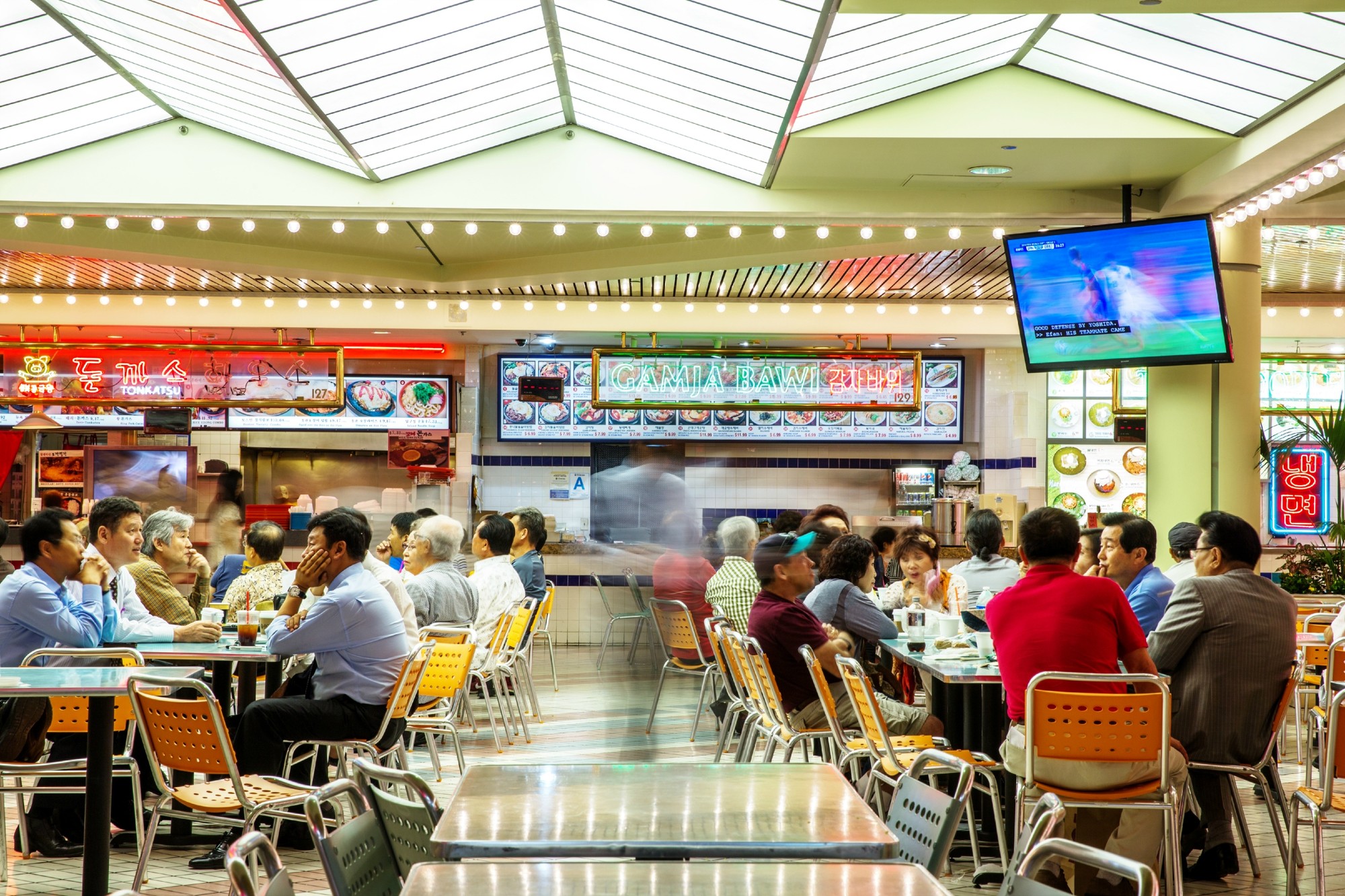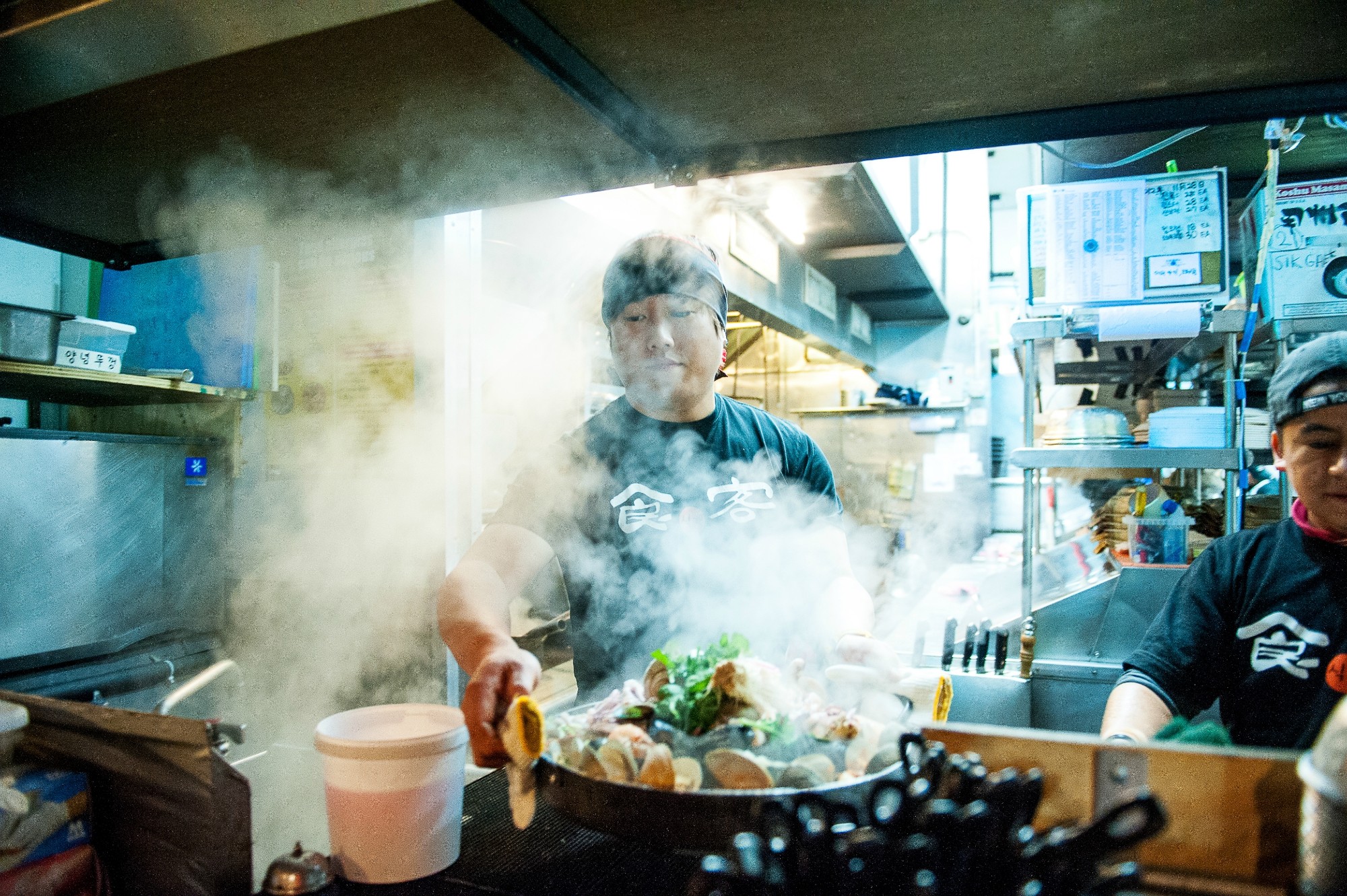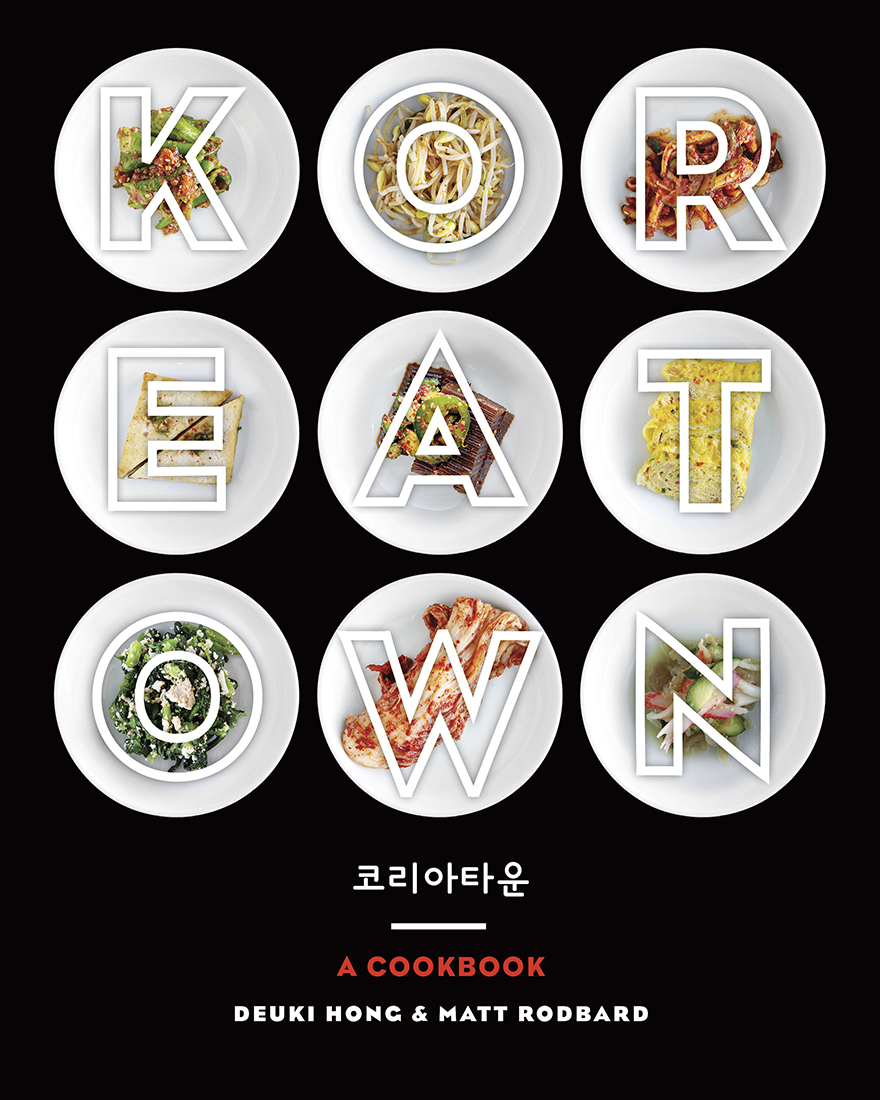When the Korean government pays you to eat your way through New York’s Koreatown, you don’t say no.
That’s how food journalist Matt Rodbard met chef Deuki Hong: the two were enlisted by the Korean Food Foundation to rank the best Korean restaurants in Manhattan, with the goal of promoting Korean food in the United States. Little did the government officials know they were putting a dream team in the same room.
The result of Rodbard and Hong’s serendipitous meeting was released this month: Koreatown , the first cookbook written from the perspective of America’s Koreatowns, is now out and ready for devouring.
 The Koreatown Plaza food court in Los Angeles, one of the epicenters of America’s Korean food culture. Photo by Sam Horine.
The Koreatown Plaza food court in Los Angeles, one of the epicenters of America’s Korean food culture. Photo by Sam Horine.
These culinary gold mines have long been hidden from the average eater due to what Rodbard chalks up to bad marketing.
“The food in Koreatowns is being cooked by Koreans, for Koreans,” he says. “It’s not that they don’t want non-Koreans eating there, they’re just think: this is for my community, and that’s enough.”
Unlike Thai restaurants—which have had such huge popularity in part because their restauranteurs market their wonderful, mild, noodle-focused cooking (and in part because it fits so well with the American palate)—Korean joints have stayed under the radar.
“All Korean restaurants are stuck in the Reagan era, especially in L.A.,” Rodbard says. “There’s the Iowa sound system from 1991. There’s a TV, usually old. The plates have been there since the Clinton Administration.It’s a workaday culture. Koreans are just there to eat food; they don’t need a koi pond or fusion music. They’re smokey, full of the haze of BBQ smoke, moody kinds of places.”
Until now, at least: the secret of Koreatowns, from Los Angeles to Atlanta to Chicago to New York, is out.
Long kept insular save for late-night chef feasts and the occasional savvy non-Korean eaters, the spicy-sweet-umami flavors of Korean food have bubbled up to the surface of American cuisine, and for good reason. For one, Korean food fits in perfectly with many of North America’s hottest diet trends and eating patterns, from gluten-free to paleo to veganism; Korean cooking employs almost no dairy, and is based largely around fermented vegetables and seafood (after all, Korea is a peninsula).
“It’s high-flavor, low-impact eating,” Rodbard says.
 A chef prepares steamed clams. Photo by Sam Horine.
A chef prepares steamed clams. Photo by Sam Horine.
For him and Hong, though, it’s also relatively easy home cooking: the two developed recipes in their New York and Brooklyn kitchens. Hong would start by cooking in his Garment District walk-up while Rodbard took notes and chatted with him about the food; then, he’d lug a bag of ingredients back to his Carroll Gardens apartment and recreate the dish. Their resulting conversations are reflected in the headnotes of the book.
“One challenge with Korean food is getting over the hump of explaining it’s not that difficult to cook at home,” says Rodbard. Of course, he acknowledges the fact that all home cooking is difficult. But with Korean food, “you’re using so many ingredients that are common to your larder to your kitchen, like scallions, ginger, garlic, and sesame oil. The most complicated ingredient is gochujang , which is fermented bean paste with pepper. But that’s what adds this really amazing fifth flavor bomb of umami.”
Now that Asian cuisines are being more deeply studied and appreciated in America, diners can expect a delicious snowball effect.
“We’re now looking to places like China as a place that has terroir; we’re learning that all Asian cuisines have their subtleties. Andy Ricker does Southern Thai in a very proud way, and he’s known for that,” Rodbard says. “Everyone loves Asian food, but many of them don’t know about Korean food. That moment is now — the mainstream is realizing that Korean flavors are very cool.”
Go forth and gochujang.

Koreatown is now on sale; for a taste of the book, co-author Matt Rodbard gave us his recommendations from across the country.
Los Angeles
Soban , 4001 W Olympic Blvd, Los Angeles, (323) 936-9106 . “It’s a crab restaurant which specializes in ganjang geajang, a raw crab dish in which live crabs are tossed in soju and water and drowned, then fermented in soy sauce and aromatics,” says Rodbard. Intense, but delicious.
A Won , 913 S Vermont Ave, Los Angeles, (213) 389-6764. This unassuming strip mall restaurant serves Korean-style sushi.
Chicago
Dancen , 5114 N Lincoln Ave, Chicago, (773) 878-2400. This pocha, or Korean bar, is in Avondale, in between suburbs and the city. Rodbard recommends ordering a few beers and the buldak, AKA fire chicken. “It has a nice throwback vibe,” he says.
Parachute , 3500 N Elston, Chicago, (773) 654-1460. This is a more modern, fine dining spot with the culinary cred to match: They were finalists for a James Beard Foundation award in 2015.
New York
Cho Dan Gol , 55 W 35th St, New York, (212) 695-8222. This New York Koreatown classic is known for its tofu dishes.
Kang Ho Baek Kang , 1 E 32nd St, New York, (212) 966-9839. This is Deuki’s barbecue restaurant, but Rodbard isn’t playing favorites. “He focuses on high-quality meat and taking it seriously,” he says. “His marinades take a lot of time and effort and totally pay off.”










